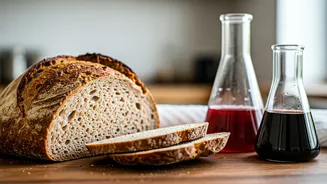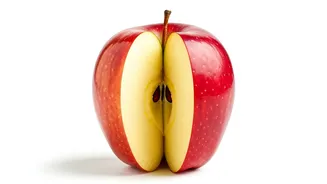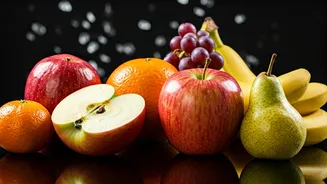Stealthy Sugar Sources
Our daily diets often include foods that surreptitiously elevate blood sugar levels. These items, frequently consumed without much thought, can lead to
unexpected blood sugar spikes. Consider breakfast cereals, for instance. Many brands, marketed as healthy, are loaded with added sugars, which quickly turn into glucose in the bloodstream. Similarly, white bread, a common staple, tends to rapidly convert into sugar, causing a significant surge. Even seemingly healthy options like flavored yogurts can harbor hidden sugars. Fruit juices, though derived from natural sources, lack the fiber present in whole fruits, allowing sugars to be absorbed quickly. Finally, processed snacks and sweetened beverages contribute significantly, often delivering a concentrated dose of sugar. Being aware of these sources is the first step toward better blood sugar management.
Cereals and Their Impact
Breakfast cereals frequently contain high amounts of added sugar. Many popular brands are marketed towards children and adults alike, with colorful packaging and enticing flavors. Unfortunately, the allure often masks a high sugar content. This sugar is rapidly absorbed by the body, leading to a quick rise in blood glucose levels. The lack of fiber, which would slow down sugar absorption, exacerbates the problem. Checking nutrition labels is crucial. Look closely at the grams of sugar per serving. Choosing cereals with lower sugar levels and higher fiber content can significantly mitigate this effect. Whole-grain options are preferable, as they offer sustained energy release and fewer blood sugar fluctuations compared to heavily processed, sugary cereals. It is important to remember that seemingly healthy choices can be misleading.
White Bread's Dilemma
White bread, a common staple in many diets, is known for its quick impact on blood sugar. Unlike whole-grain alternatives, white bread is made from refined grains that have had their bran and germ removed. This process strips away much of the fiber, resulting in a product that quickly converts to glucose in the body. When consumed, white bread causes a rapid spike in blood sugar, followed by a potential crash, leaving one feeling hungry again soon after. This is why individuals seeking to control blood sugar often opt for whole-wheat or other whole-grain breads, which offer a slower, more sustained release of energy. The fiber in whole-grain bread slows down the digestion of carbohydrates, preventing sudden blood sugar surges and promoting better overall metabolic health. The choice of bread can therefore make a significant difference in how the body manages glucose levels.
Yogurt's Sugar Secrets
Flavored yogurts, another frequently consumed food, often contain hidden sugars that can affect blood glucose levels. While yogurt itself can be a healthy food source, many commercial varieties include added sweeteners to enhance taste. The addition of sugar negates many of the health benefits, leading to a rise in blood sugar levels. Some flavored yogurts have as much sugar as desserts. Reading labels carefully is therefore essential. The best way to enjoy yogurt without the added sugar burden is to select plain, unsweetened yogurt and add your own fruits, nuts, or a touch of honey if desired. This allows you to control the amount of sugar and customize your yogurt to suit your dietary needs. This choice can drastically influence the overall impact of the food on your blood sugar, enabling better control.
Juice vs. Whole Fruit
Fruit juices, although sourced from natural fruits, lack the fiber that helps regulate sugar absorption. When you consume whole fruit, the fiber slows down the digestion and absorption of the natural sugars, such as fructose. In contrast, fruit juice is often processed to remove the fiber, resulting in a quick release of sugar into your bloodstream. This sudden influx of glucose can cause blood sugar spikes. For instance, a glass of orange juice can have a comparable sugar content to several oranges, but without the benefit of the fiber to regulate the body's response. Choosing whole fruits is always a better option, because it provides essential fiber that reduces rapid sugar absorption. Prioritizing whole fruits rather than juices is therefore a good strategy for maintaining steady blood sugar levels and promoting overall health.
Processed Snacks' Danger
Processed snacks and sweetened beverages frequently deliver a substantial and concentrated dose of sugar. These items, common in most diets, often contain high amounts of added sugars and refined carbohydrates. Examples include chips, cookies, candies, and soft drinks. The high sugar content in these snacks results in rapid blood sugar increases. Furthermore, many processed snacks offer little in terms of nutritional value. They lack essential vitamins, minerals, and fiber that might help regulate the effects of sugar. Opting for nutrient-rich snacks that include fiber and protein can help stabilize blood sugar levels. Consider alternatives like vegetables with hummus, a handful of nuts, or a piece of fruit paired with protein or healthy fats. These strategies can help minimize sugar spikes and promote better metabolic health.













